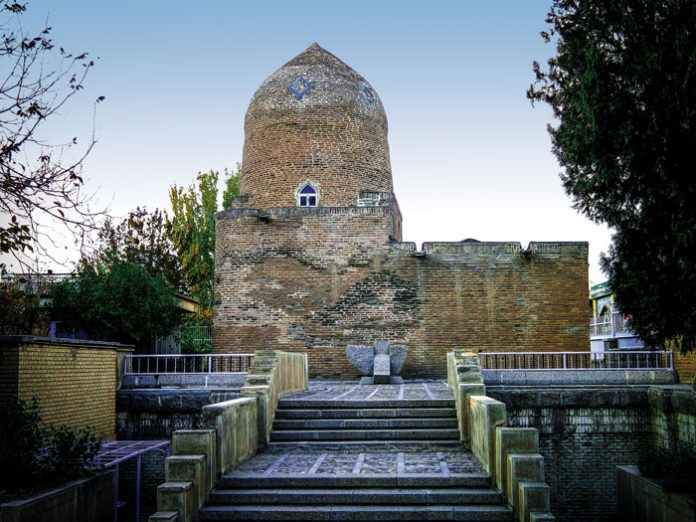Have you ever heard the joke, “Guess who’s buried in Grant’s Tomb?” The answer, of course, is Ulysses S. Grant.
According to some historians, however, the answer to “Who is buried in the Tomb of Mordechai and Esther?” might not be so clear-cut.
The Discovery of the Existence of a Jewish Queen
In 1886, on a mission to research Afghani songs in India, a Jewish orientalist by the name of James Darmesteter discovered a manuscript written in the Pahlavi language, also known as Middle Persian, which discusses a Jewish queen of the Sasanian Empire. Her name was Shushandukht, and she was married to the Sasanian (non-Jewish) King Yazdegerd I, who ruled from 399 to 420 CE.
The manuscript, entitled “Šahrestānīhā ī Ērānšahr” (“The Provincial Capitals of the Iranian Domain”), mentions that this queen was the daughter of a reish galusa, but it does not name him. It is the only major surviving Middle Persian text on geography, enumerating the empire’s cities, who built them, and their significance in Persian history.
In 1889, at the Eighth Congress of International Orientalists in Stockholm, James Darmesteter delivered a paper that was published several years later, entitled “La Reine Shaysan Dukhat” (“Queen Shushandukht”). “Dukhat” in Pahlavi means daughter, and “Shushan” in Hebrew may refer to the name of the city mentioned in the Megillah or to a shoshanah, a rose or lily. According to the manuscript Darmesteter found, this Jewish queen established large and prosperous Jewish neighborhoods in Isfahan, Susa, Hamadan and Shushtar.
One of Shushandukht’s sons, Bahram V, was the 15th king of the Sasanian Empire and the most famous and popular ruler in its history. Her other two sons were Shahpur IV and Narseh. Narseh is known to have established the city of Khwarzem, which was later affiliated with the Kuzarim who converted to Judaism.
Shushandukht’s Yichus
Although the name of the reish galusa isn’t mentioned, Professor Darmesteter believed that Shushandukht’s father was Kahana ben Abba Mari, who lived during this period.
In his paper, Darmesteter quoted the Gemara in Zevachim (19a), illustrating the wonderful relationship the Jews had with Yazdegerd. On one occasion, Rav Huna bar Nasan was among the assembled dignitaries when the king noticed that Rav Huna’s belt was crooked. The king adjusted it and remarked, “It is written, ‘You shall be a kingdom of priests and a holy nation,’ and you must therefore wear the belt as the priests do.” When Ameimar heard about this, he said to Rav Huna, “The prophetic promise [Yeshayahu 19:23] ‘Kings shall be your attendants’ has been realized in you.”
The Gemara (Kesubos 61a) also relates that Ameimar, Rav Ashi and Mar Zutra would sit in the courtyard of Yazdegerd I, Shushandukht’s husband.
The Background of James Darmesteter
James Darmesteter was born in Lorraine, France, to an Orthodox Jewish bookbinder and bookseller by the name of Cerf Darmesteter. His mother, Rosalie, née Brandeis, was the daughter of one of Napoleon’s officers who was descended from a long line of Polish rabbis and physicians. Cerf Darmesteter’s grandfather had chosen the name Darmstadt in 1791, when the French were required to choose surnames. His intention was to commemorate the Darmstadt Ghetto in Germany, where the family had originated. The French registrar changed it to Darmesteter.
Cerf Darmesteter moved to Paris with his family to be near his widowed mother. He had a hard time making a living, and as a result James was very malnourished. He never grew to a proper height, and he was slightly deformed and quite frail. But his brilliant mind made up for his weak body.





















